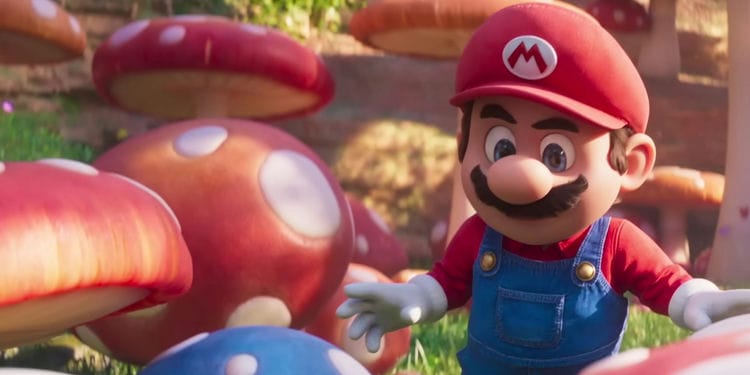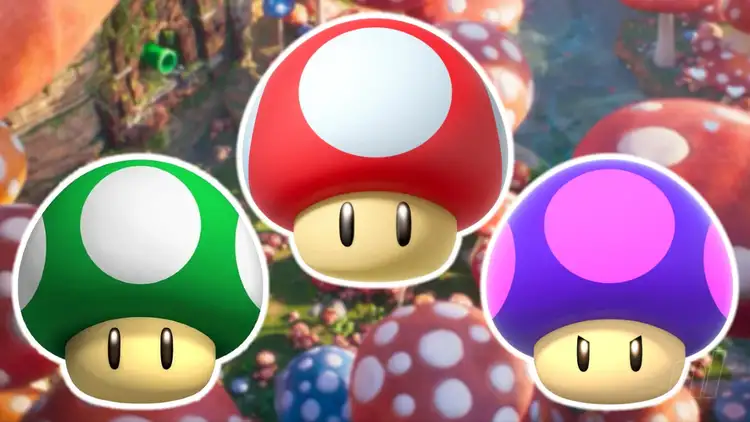MOVIE & LIFESTYLE NEWS
Does Mario Like Mushrooms? Exploring the Role of Mushrooms in the Super Mario Universe
As the star of Nintendo’s Super Mario series, he’s a pop culture icon known for his red hat, blue overalls, and bushy mustache. But another notable characteristic is his association with mushrooms. This leads to a common question: Does Mario like mushrooms? Let’s dive into the world of Super Mario to find out with AlibayTrendy Store now
The Origin of Mushrooms in Super Mario Games
Mushrooms have played an essential role in Mario’s journey since the very beginning. They are woven into the fabric of his adventures, serving as a symbol of growth, power, and transformation. The first Super Mario game, “Super Mario Bros.,” released in 1985 for the Nintendo Entertainment System (NES), introduced players to the now-iconic Super Mushroom.

This power-up was a game-changer, allowing Mario to grow in size, granting him additional strength and resilience, and enabling him to tackle challenges that would otherwise be insurmountable. The inclusion of the Super Mushroom was a masterstroke by Nintendo’s game designers.
It provided players with a tangible reward for exploration and experimentation. In a world filled with dangerous enemies and obstacles, the Super Mushroom offered a sense of security and empowerment. It became a fundamental part of the gameplay experience, transforming Mario from a small and vulnerable plumber into a formidable force capable of smashing bricks, defeating enemies with ease, and surviving an extra hit.
As the Super Mario series evolved, so did the role of mushrooms in the game. The concept of power-ups expanded, leading to the creation of various types of mushrooms with unique effects.
The 1-Up Mushroom, distinguished by its green color, granted players an extra life, allowing them to continue their adventure even after making a mistake or falling into a trap. This addition introduced a new layer of strategy, encouraging players to take calculated risks to collect these valuable items.
The variety of mushrooms didn’t stop there. Nintendo continued to experiment with different types of mushrooms, each with its own unique ability. The Poison Mushroom, for example, brought an element of danger to the game, as touching it would harm Mario, potentially causing him to lose a life. This twist on the traditional power-up required players to be more cautious and attentive, adding depth and complexity to the gameplay.
In subsequent games, new mushrooms with different powers were introduced. The Mini Mushroom, which shrank Mario to a tiny size, opened up new gameplay possibilities by allowing him to explore hidden areas and traverse tight spaces.
On the other hand, the Mega Mushroom transformed Mario into a massive, unstoppable force, capable of destroying almost everything in his path. This juxtaposition of power-ups added excitement and unpredictability to the series, keeping players engaged and eager to discover new secrets.
Throughout the Super Mario series, mushrooms have remained a central element, symbolizing growth, transformation, and the ability to overcome challenges. The diverse roles and powers of these mushrooms have become a defining characteristic of Mario’s adventures, contributing to the enduring appeal of the franchise.
Whether it’s the classic Super Mushroom, the life-saving 1-Up Mushroom, or the mighty Mega Mushroom, each has left an indelible mark on the gaming world, reminding players that with the right power-up, anything is possible.
Different Types of Mushrooms in Super Mario
The Super Mushroom is perhaps the most recognized, but there are several types of mushrooms in the Mario universe. These include:
- Super Mushroom: The classic red mushroom with white spots that makes Mario grow larger and stronger.
- 1-Up Mushroom: Green with white spots, this mushroom gives Mario an extra life, allowing players to continue even after defeat.
- Poison Mushroom: A dangerous purple mushroom that harms Mario, requiring careful avoidance.
- Mini Mushroom: A blue mushroom that shrinks Mario, allowing him to access smaller spaces.
- Mega Mushroom: A giant orange mushroom that turns Mario into a massive, invincible version of himself, capable of crushing obstacles.
Each of these mushrooms has unique effects, adding variety to the gameplay and strategic options for players.

Does Mario Like Mushrooms?
Mario, the beloved character from the Super Mario series, is often depicted using mushrooms to gain special abilities and power-ups. However, it’s worth noting that in the games, there’s little evidence to suggest that Mario consumes mushrooms in a culinary sense.
The mechanics of the games show him merely touching a mushroom to activate its effects, with the transformation being almost instantaneous. Unlike other media where characters are depicted eating food, Mario’s interaction with mushrooms is purely functional, with no indication of taste or culinary enjoyment.

Despite this, the fact that mushrooms play a significant role in his adventures indicates that Mario has a positive relationship with them. In each game, Mario seeks out mushrooms to gain additional powers, whether it’s to grow in size, gain extra lives, or become invincible.
These interactions suggest that Mario appreciates the benefits mushrooms bring, even if he doesn’t necessarily enjoy eating them like a typical food item. Given their importance in helping him overcome obstacles and defeat enemies, it’s clear that Mario views mushrooms as essential allies in his quest to save the Mushroom Kingdom.
Mushrooms in Mario’s World
In the Super Mario universe, mushrooms are more than just power-ups; they are an integral part of the world’s culture and ecology. The Mushroom Kingdom, where many of Mario’s adventures take place, is populated by Toads, a race of mushroom-like characters who serve as citizens, allies, and even heroes in their own right.

Toads play various roles throughout the series, from guiding Mario on his journey to providing crucial information and support. Their presence in the Mushroom Kingdom underscores the cultural significance of mushrooms in this fictional world.
Moreover, Princess Peach, the ruler of the Mushroom Kingdom, has a strong connection to mushrooms. Her kingdom’s name itself indicates the importance of these fungi in the broader context of the series.
The Mushroom Kingdom is often depicted as a vibrant and thriving land, with mushrooms playing a key role in its landscape and society. From the architecture to the flora and fauna, mushrooms are a common theme, reinforcing the idea that they are central to the world’s identity.
The cultural importance of mushrooms in Mario’s world extends beyond the characters and setting. In various games, players encounter entire mushroom-themed regions, indicating that mushrooms are not only prevalent but also celebrated.
This thematic consistency across the Super Mario series demonstrates the enduring role of mushrooms, both as a source of power for Mario and as a symbol of the world in which he lives and adventures. Through these elements, the creators of the Super Mario series have crafted a rich and engaging environment where mushrooms are not just a gameplay mechanic but a core aspect of the game’s lore and culture.
In summary, mushrooms have been a key component in Mario’s journey since the very beginning. While it’s unclear whether he actually enjoys eating them, their power-up capabilities have been instrumental in helping him defeat foes and conquer challenges throughout the Super Mario series. The many types of mushrooms, from the Super Mushroom to the Mega Mushroom, offer players a diverse range of gameplay experiences.
If you’re a fan of Mario and all things Mushroom Kingdom, why not show off your love with some stylish merchandise? The AlibayTrendy Store offers a fantastic selection of Mario Hawaiian Shirts that capture the fun and adventure of the Super Mario universe. These shirts are perfect for casual wear, summer outings, or game nights with friends. With vibrant colors and iconic designs, they let you bring a touch of Mario’s world into your everyday life. Visit the AlibayTrendy Store today and grab your Mario Hawaiian Shirt to start turning heads!
